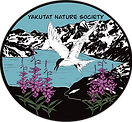


Yakutat, Alaska
Tern Festival

Brought to you by the Yakutat Nature Society

REGISTRATION IS OPEN
Join us at the 13th Annual Yakutat Tern Festival

Mike Denega
The 13th Annual
Yakutat Tern Festival:
May 30-June 2, 2024
The Yakutat Tern Festival is a celebration of the natural and cultural resources of Yakutat, Alaska.
Join us to experience unique recreation opportunities including children's field trips and activities, adult workshops, guest speakers, educational programs, local foods, and more!

Art by: Savannah LeCornu
(Savannahpants Art)



Birdwatching in Alaska
Alaska’s pristine wilderness is an ideal habitat for a variety of bird species. Can you guess how many? Over 350! The Yakutat Tern Festival is part of the larger Southeast Alaska Birding Trail. What is a birding trail? It is a virtual guide to birding hotspots within a specific geographic region. Explore the pages of this virtual guide and find maps highlighting key places across the archipelago for birdwatching. You can also download the Southeast Alaska Birding Trail mobile app.

The 12 Annual Yakutat Tern Festival was not just for the birds.
Read the Juneau Empire article
Here.






SUBSCRIBE
STAY IN THE LOOP


